When starting a pet, you need to clearly understand what exactly you have to face. Caring for any pet is not easy, especially when you have to deal with a very tiny pet. If a kitten of a month's age should appear in the house, it is necessary to prepare housing for him and read certain literature that will help to properly care for the crumbs and feed him that food that is suitable for a period of 1 to 3 months.
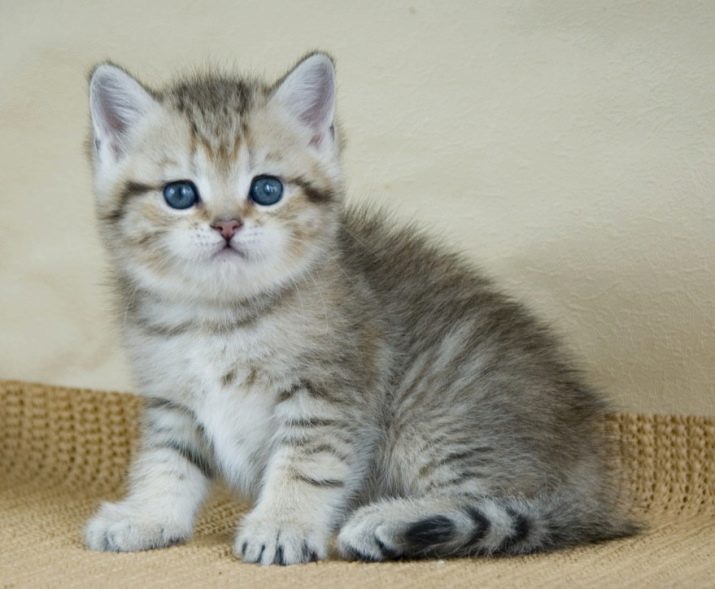
Nutrition rules
When a small kitten appears at home, care must be taken to ensure that it has a place to relax, play and eat. The arrangement of the territory for the pet is best done in advance or as soon as possible after its appearance, since then it is necessary to solve a much more important issue regarding the nutrition of a new family member. In the event that the pet is purchased and lives with the new owners without a mother, it has nowhere to get the milk that the cat gives its kittens, so you need to decide on the regimen and composition of food in the first days of life of the crumbs in the new house.
A properly composed diet and diet will allow the pet to grow well, be active and not experience any discomfort in the new house. To give the kitten such an opportunity, first of all, you need to choose how the animal will be fed. There are 2 main options:
- using purchased feed;
- thanks to self-cooking.
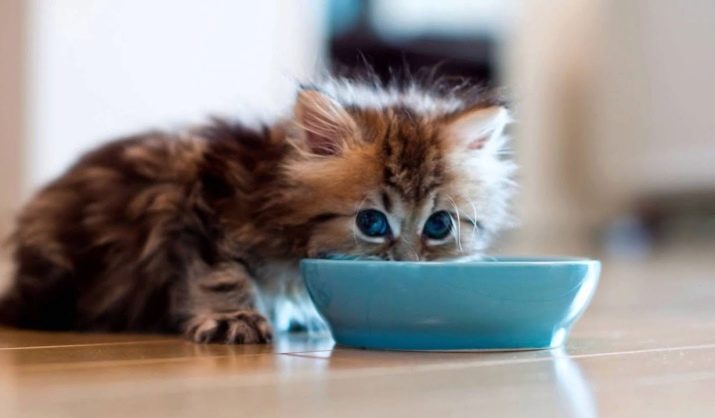
Each of the options is good in its own way, so you need to decide what is more convenient in a particular case.
Mixing both options for a kitten aged 1 to 3 months is not recommended, since it will be difficult for his body to change from one food to another.
Those owners who prefer to cook themselves will be more confident in the quality and freshness of the products that they give the pet, this is a big plus of this option. On the other hand, when using ready-made feed, the kitten receives a balanced diet, in which there are all the necessary elements that allow you to grow and develop as it should.
If the owner is inclined to independently prepare food for the pet, he must know exactly what the animal can eat at such a young age, and what foods should be avoided. In no case should a kitten be given food from the table, since it is not at all suitable for a growing organism.
Another feature of self-prepared food is the complete absence of salt or any spices in it, since cats do not tolerate strong odors, and what a person tastes good will not like a pet at all.
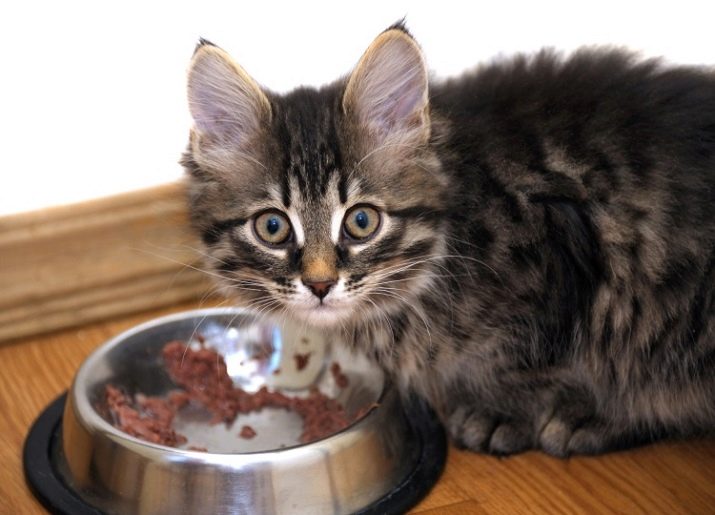
In the case of cooking, the owner must additionally purchase nutritional supplements, vitamins and mineralsto ensure the full development of the animal’s body and protect it from health problems.
If we talk about ready-made feeds, then it is also worth being careful in choosing, since a kitten needs only the highest quality food, which means that it’s not worth buying cheap and low-quality products. The smallest are better to buy premium food, for which only the highest quality products are used, enriched with vitamins and minerals.

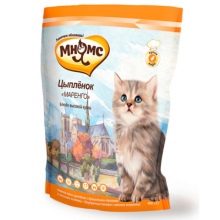
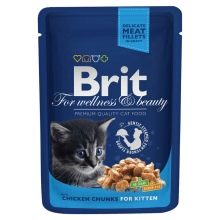
Veterinarians recommend using ready-made products for feeding monthly kittens, especially if the owner does not yet have experience in caring for pets.
As you get the relevant knowledge, you can try your hand at cooking, but you should only do this when the kitten is older. Eating a more adult pet will include dry food.
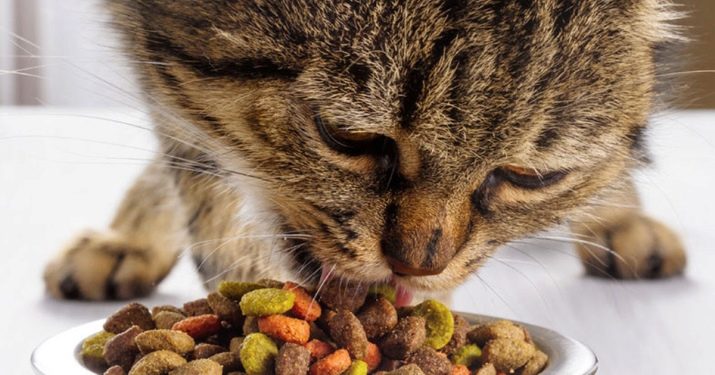
Making a diet of natural products
Homemade food is better for a kitten only if the owner knows well how to make a ration, how and how to feed a pet during the day. Among the allowed and healthy products, the following ingredients can be distinguished.
- Meat - it should be low-fat varieties, such as beef, turkey, chicken. For a comfortable meat consumption, it should be boiled.
- Offal - provide an opportunity to diversify the diet. Giving them is necessary only in boiled form. Kittens should cook the liver no more than once a week.
- Sour-milk products - bought on the day of feeding, which ensures maximum freshness of food. It is important to purchase products with low fat content so that the kitten’s stomach can easily cope with the food received.
- A variety of cereals - the kitten can be given rice, buckwheat or oatmeal porridge, the main requirement is the high-quality preparation of the product so that it does not have undercooked pieces that impede the digestion process.
- Plant food - for a variety of nutrition in the diet, you can add boiled carrots, beets, zucchini and herbs. It is best to mix vegetables with meat, because in this combination kittens are much more willing to eat food.
- Fish - kittens can only cook sea fish, which has a slight fat content. It is especially important to consider the size, type and number of bones that can cause big problems in a small animal. Most of all, cod, hake, haddock are suitable for such pets, but you should not give fish more often 2-3 times a month.
- Eggs - for kittens from 1 to 3 months, quail are best suited, as they contain the most vitamins and nutrients. In addition, this is the minimum risk of contracting something, as it can be in the case of chicken eggs. Quail eggs must be boiled, you can give both protein and yolk, and over time, even let the kitten drink the contents of the shell.As for chicken eggs, it is allowed to use only the yolk, which will benefit unlike protein. In this case, the yolk is given only boiled and not more than 1-2 times a week.
- Vegetable oil - To obtain additional useful substances, you can add olive, sea buckthorn and linseed oil to your food. You can add it to food several times a week in an amount not exceeding one teaspoon.
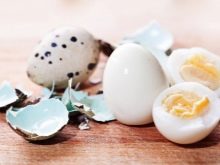
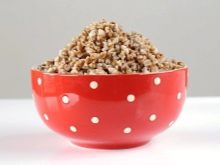
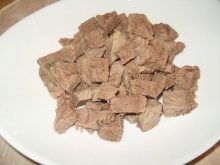
To improve the digestion process and help the kitten cope with various problems, for example, removing wool that has got into the stomach, it is worth buying a special weed, which is in pet stores.
By breeding and periodically giving the kitten its food, many problems can be avoided. The process of feeding a small pet has its own characteristics, without knowledge of which it will be difficult to grow it, while maintaining health. Food for crumbs should be warm, not overheated, and heat treatment of products should be of high quality. All other cooking options will be unacceptable to a growing animal.
Overview of finished feed
If the owner does not have much time to cook natural food for the kitten daily, then it is easier to use prepared feeds in the diet. For adult cats, they can be either dry or wet. It is better for very small kittens to acquire the second variety, but as the pet gets used to it and getting older, introduce it to more solid food. In addition to the type of feed, you must be puzzled by the selection of the appropriate brand, which produces high-quality products that in no way threaten the health of pets.
Among the most famous, the following brands can be distinguished.
- 1 st Choice - these are premium feeds that are recommended for kittens from two months old to one year old. All components are of high quality, so the pet will receive a full set of nutrients. Due to the combination of quality and affordable price, this version of the finished feed is considered the most suitable for feeding kittens.
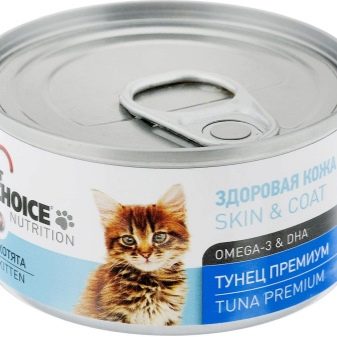
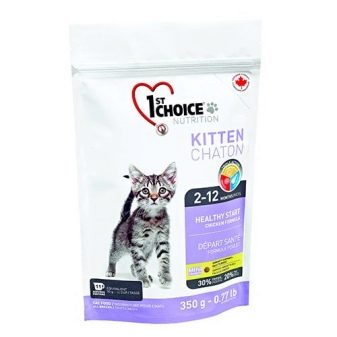
- Hills science plan - feeds of this brand have several options: two dry and one wet, so making the right choice will not be difficult. Product quality in this case is also very high.
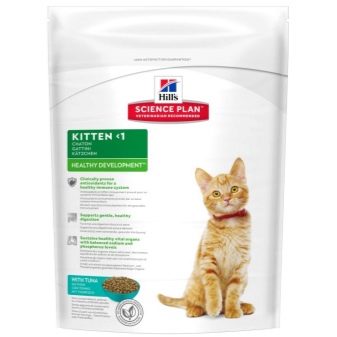
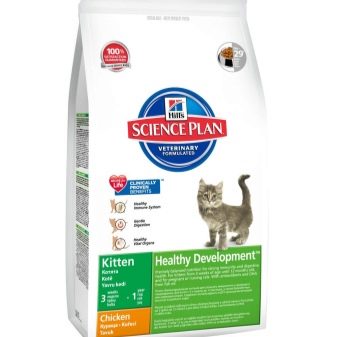
- Royal Canin. The company offers pet food for children under 4 months of age (canned food) and over four months of age (dry food). Due to the quality of products, this brand has long established itself as a reliable and trusted manufacturer of food for cats of any age category.

- Happy cat junior - A specialized product designed for kittens aged 5 weeks to one year. The features of the development of the animal at each stage of growth are taken into account, the most suitable products of the highest quality are selected. All this allows you to safely trust this brand and use its products for your pets.
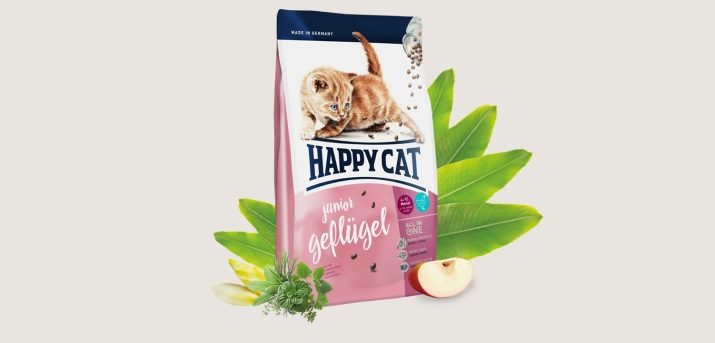
- Purina Pro Plan - this brand boasts a certain variety of kitten feeds (dry and wet options). Good quality products, the ability to choose exactly what to feed a small pet, as well as an affordable price make this brand one of the most popular.

Veterinarians and specialists note that kittens get the most nutritious nutrition thanks to holivics - products created using technology that makes it possible to preserve the juiciness and freshness of meat in them.
This option is considered ideal for feeding kittens, but not everyone can afford it, since the cost of such feed is quite high. The most famous manufacturers of such products are brands:
- Eukanuba;
- Orijen;
- Pro Nature;
- Innova Evo;
- Superpet.
Each owner can choose the most balanced version of the feed, which will differ in the quality of the products and correspond to the age of the pet.It’s not always possible to purchase food that the kitten will like, so you don’t need to buy large packages right away, it’s better to give your pet a try of one or another option, and if he likes it and is well received by the animal’s stomach, you can stop at it for a certain time.
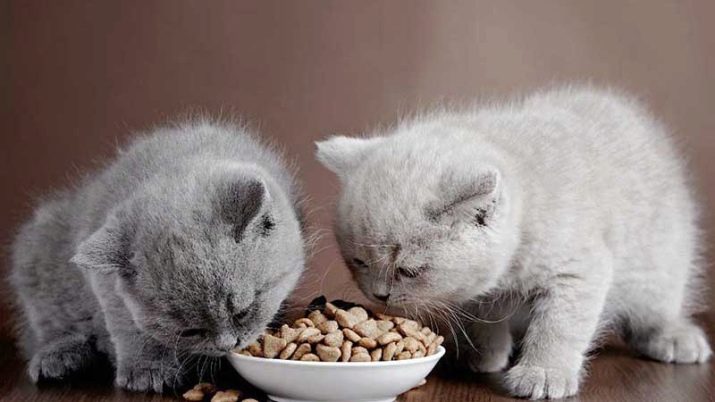
What should not be given?
Knowing how to feed a kitten, which feed to choose and what is worth giving will not be enough, you must have information about which products are undesirable and even harmful to him. Among the most unfavorable, the following products can be distinguished.
- Cow's milk - growing up, the pet begins to experience problems with lactose tolerance, therefore, after consuming milk, its digestion will begin to fail.
- Bones - Small bones can get stuck in the throat or esophagus, which will cause certain problems. When the pet becomes an adult, it will be possible to give him large bones with which he can brush his teeth.
- Smoked meats and fried foods - no smoked or fried foods should be in the diet of a kitten, they are harmful to both small and adult cats. Such food is very difficult to digest and can adversely affect the health of the pet, causing irreparable consequences.
- Certain Vegetables and Mushrooms - Do not feed the kitten with potatoes, eggplant, onions and garlic, tomatoes, as well as legumes and mushrooms. Such food is difficult to digest and does not bring any benefits to the body.
- Baking & Sweet Food - All bakery products of a neutral taste, as well as sweet, should not be given to a kitten. The same applies to any sweets, including chocolate. This food will only harm the body of the pet.
- Salt and seasoning - Any food that is prepared for a kitten or adult should not contain any salt or spices. These components extremely negatively affect the health of the pet and become the cause of various diseases in the future.
- River fish species - unlike the marine variety, fish in rivers are subject to a strong attack of parasites, which even after heat treatment do not disappear anywhere, but remain in the kitten's body, gradually destroying it.
- Fat meat - You can’t feed your pet with pork, fat, fat, because he will have indigestion, and liver problems will begin.
- Chicken skin - the kitten is not able to digest this product, so the body will not work well, it will spend energy, and in the end will not receive any benefit or energy.
- Egg white - chicken egg protein contains an enzyme that destroys biotin in the cat's body.
- Medication - their consumption is necessary only in rare cases and only by prescription of a veterinarian.
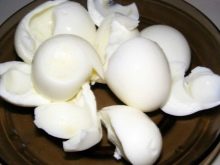

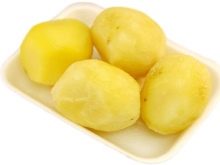
Elimination of products harmful to kittens will help to avoid accidental errors in the preparation of the menu and help the pet grow healthy.
How to choose the type of feeding?
To determine what type of feeding to choose for your pet, you need to analyze the advantages and disadvantages of each of the available options. If the choice is made in favor of self-cooking, then it is worth considering what is good in this option and what are the negative aspects. The following points can be attributed to positive.
- Possibility of independent selection of the menu for a kitten. The owner himself can determine what to mix with, when to give and in what quantity. Having well studied the addictions of the pet, you can highlight what he likes and make a diet, based on the knowledge gained.
- Security. Freshly prepared foods will not have any additives, preservatives or colorings that can be found in some cooked kitten products.
- The ability to diversify foodthat the kitten will receive. With ready-made feeds, this is quite difficult to do.
- Lack of addiction to self-cooked food. There are a number of feeds that begin to cause addiction in a pet, and it becomes almost impossible to wean an animal from them. Such situations do not happen with homemade food, so it is more suitable.
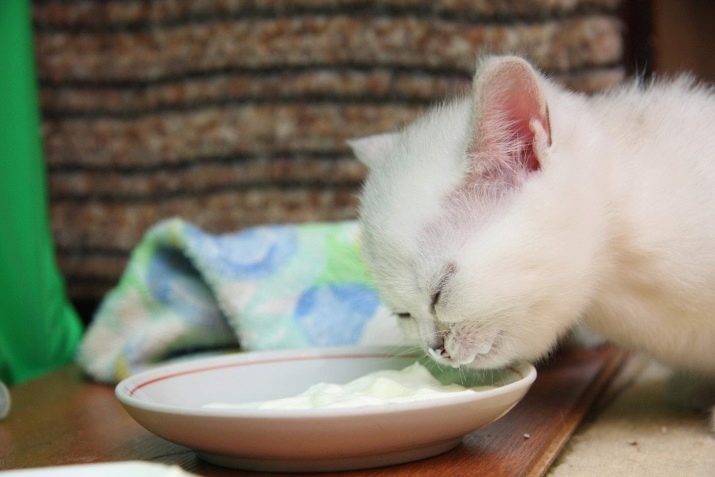
Among the shortcomings, there are only a few points:
- special attention when selecting ingredients for cooking, so as not to accidentally put unnecessary;
- the introduction of additional additives and vitamins, which will compensate for their lack in ordinary food.
The advantages of this option for feeding a kitten are much greater than the disadvantages, but not every owner has free time to prepare a varied and nutritious food, so many choose dry and wet prepared feeds.
The advice of veterinarians in this case is as follows:
- finished food should be of high quality, better than premium;
- do not feed the pet with the same food for too long; for full growth and development it is important to introduce a certain variety;
- when switching from one type of feed or brand to another, you need to carry out the process gradually, mixing the new product with the old one, and slightly increase its quantity.
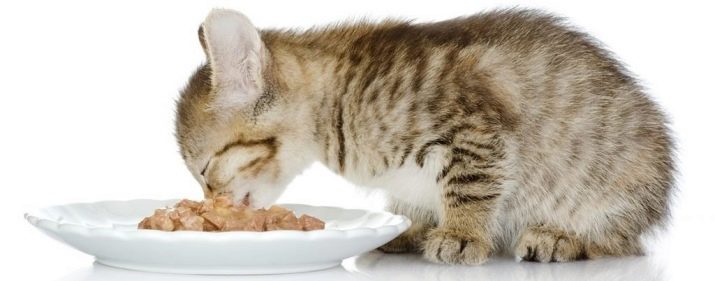
To decide whether to buy a pet dry food, you need to consider its pros and cons. The following can be attributed to positive:
- in quality products there is a complete list of vitamins and minerals that a kitten needs;
- the diet is selected taking into account the age of the animal;
- when eating dry food, the jaws will work actively in kittens, which will benefit animals only;
- there is no need to spend time and energy preparing food for a pet;
- the ability to feed the kitten anywhere, as well as take food with you on long trips;
- the volume of each serving is indicated by the manufacturer on the packaging.
In addition to the obvious advantages, this option of eating kittens has certain disadvantages.
- When buying inexpensive food of economy class, there is a risk of harming the animal, since it contains a high concentration of mineral salts, which over time become the cause of urolithiasis. In addition, in such food waste products can be found that harm the growing organism of the kitten.
- Fats, flavors and preservatives may be present in some foods.
- As mentioned above, an animal may develop dependence on certain types of food, and it will be very difficult to wean a kitten from such food.
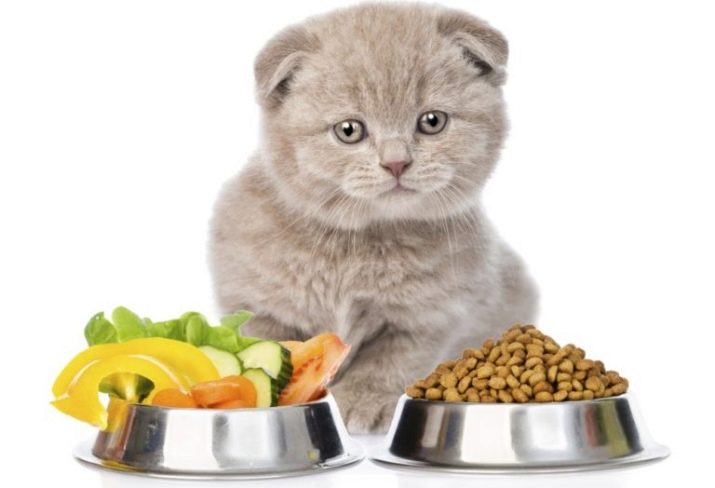
The choice of one or another option will depend on the owner and his pet. If you wish, you can delight your pet with delicious and healthy dishes without any harm, and at the same time cook something new and unusual each time to develop the gastronomic sensations of a cat.
If there is no opportunity, desire or time for this, then it is worth choosing a high-quality feed with the optimal composition so that the pet grows and develops in accordance with its age.
How many times a day to feed?
Since the size of the little kitten is still small, it is important to give the right amount of food for each meal. It is age that affects the frequency of feeding and serving sizes. It is recommended to give the pet food often, but in small quantities, otherwise it can provoke the development of diseases of the digestive tract.
The best option for feeding, taking into account age:
- a monthly kitten should be fed from 6 to 8 times a day;
- two-month - no more than 5 times a day;
- three-month - 4 times;
- starting from 4-5 months to a year, the pet is fed no more than three times a day;
- when the cat becomes old enough, you can switch to two meals a day, it is recommended to do this no earlier than a year and a half.
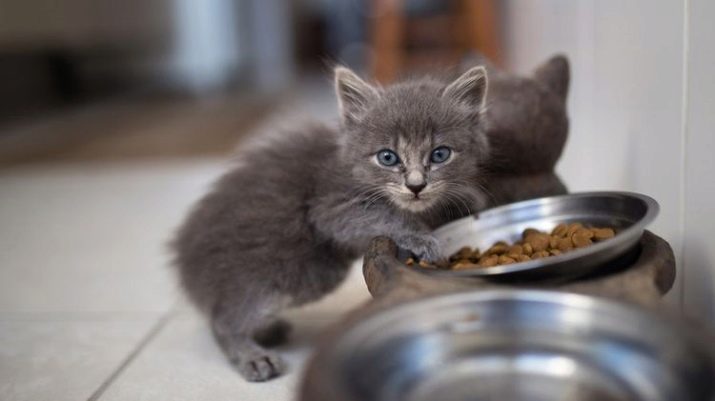
A newborn kitten eats only mother's milk and does not need other food. At 1 month, he already lacks such nutrition and it is necessary to introduce new food. It is best to start with dairy products (fermented baked milk or kefir).Such products are poured into a bowl, which allows you to teach your pet to eat independently in a designated place and from certain dishes.
By two months, you can begin to introduce paste for kittens and cook soft cereals, in which grated meat is added.
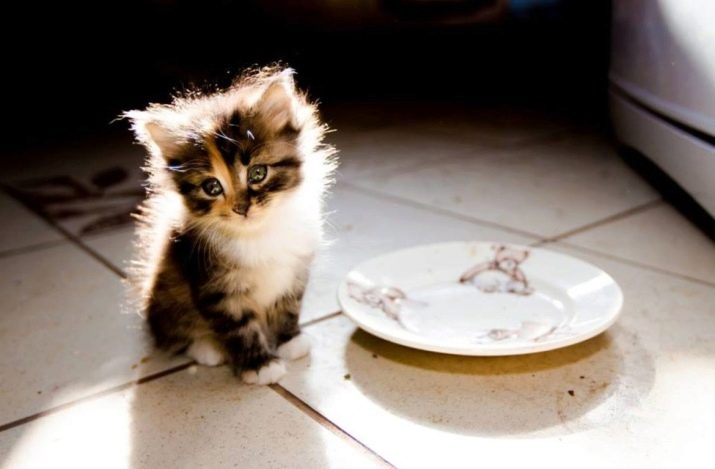
At 2 months, the kitten’s diet becomes wider and more diverse, vegetables are introduced, which together with meat they are no longer rubbed, but finely chopped. Dairy products are still important and should make up most of the diet. At the age of three months, you can switch to full-fledged feeding, the fourth part of which is dairy products (but not pure milk). The diet should also include cereals, meat and vegetables, which are cut in large pieces. If you wish, you can give your pet to try raw vegetables.
As for the amount of food in one serving, then approximate calculations are made according to the scheme - 150 g of products per 1 kg of kitten weight. These data may vary depending on the calorie content of food. In the case of finished feed, the packaging already indicates the norms for each age group.
See how to feed a kitten in the next video.


































